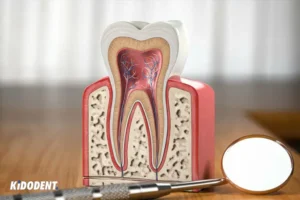Dental bonding is a term that is used for variety of adhesive restorative approaches in dental field. Adhesion means binding two things together. Dental bonding means using bonding systems and different materials in restoration of teeth. When dental materials are strongly bonded to both enamel and dentin (these are structures of teeth), bacteria can’t penetrate the restorations and dental decay will not happen. Dental bonding is the fastest way to reach the esthetic result of your teeth. Restoration involves the material for restoration, the kind of adhesive and the techniques of application.
It is important to know that chemical bonding of the restorative materials and the structure of tooth is really challenging. The reason is due to many factors like water (wettability), biofilm, saliva or in cavity preparation case, smear layer. Also, preparation of enamel and dentin for better bonding to the materials is another key factor. This is why acid etching technique and cleaning the remaining surface of teeth is important in greater dental bonding with the materials.
Restorations with dental bonding
Restoration with bonding compared with other restorations like veneer and dental crowns is easier and flexible. You should know that bonding with composite, porcelain veneer and dental crown all address dental problems depending on the type of dental condition.
For example, bonding with composite resins in pits and fissures is one of the best preventive methods to stop dental caries from developing. You can see our posts on crown and composite veneers for detailed information.
The following are the common dental bonding systems:
- Composite resin bonding to enamel, dentin, metal and porcelain materials
- Porcelain bonding to enamel and dentin
- Glass ionomer bonding to enamel and dentin
What are the best dental bonding techniques?
The bond between the composite and the tooth (enamel or dentin) should be strong enough to stand firm for better longevity. Therefore, the tooth should be etched and primed before using the bonding material. To make this adhesion of the enamel or dentine with the composite, bonding materials have gone through great developments from composite components. Also, blue light is a unique advance in polymerization of composite.
These are the best dental bonding techniques:
- Resin-bonded composite through acid-etch technique to the tooth’s structure
- Glass-ionomer cements
- Resin-modified glass ionomers cements
Composite or glass ionomer
Composite consists of resin matrix, different types and particles of inorganic fillers and silanes, which are biofunctional compounds to stick to both resin matrix and inorganic fillers together. These inorganic filler types are responsible for bonding strength. When we say resin composite, we mean the kind of reinforced polymer. It is this polymer system that restores the hardest tissues in our body (enamel and dentin). Universal, flowable, laboratory, nanofilled and microfilled are main composite types.
Each one of these composite materials has special benefits. Flowable composite is one option for pediatric restorations and dental damages like cervical lesions. For dental bridges, laboratory composite is used. Microfilled composites give you the best polished surface similar to enamel of your teeth. When you look for the best long term results and quality, nanofilled materials are worthy composite materials to choose.
Glass ionomers (GIs) cement as luting agent and restorative material is popular in patients with higher risks of caries. The success of glass ionomer cement is in its biocompatibility feature and good adhesion to enamel and dentin.
Glass ionomers provide the restorations in both aging population and pediatric restorations with higher risks of caries, root caries or dry mouth problems.
Resin-modified glass ionomers (RMGIs) or as it is called hybrid ionomers is also popular for high-risk caries conditions. These dental restorations are also composites but, because of water-based nature and acid reactions, the classification is different.
Hybrid ionomers and glass ionomers release more fluoride compared with composites. Hybrid ionomers, due to resin component, are more beautiful dental restorations than glass ionomers. Both hybrid ionomers and glass ionomers are also called self-adhesive because of bonding to tooth structure independently.
Polyacid-modified resin composites (compomers) are other restorative materials that have fluoride-releasing capability. It is also a great material choice for children dental restoration especially in primary teeth. Adult patient with medium caries can also benefit from compomers. Compomers need adhesive to bond to teeth.
Advantages of dental bonding and possible problems
The composite or any other bonding material should hold long-term pressure of teeth and withstand this amount of force over time. Polymerization shrinkage is one of the main cause of breakdown and appearance of cracks in enamel and resin at marginal surfaces. For this reason, resin types are really important. Ormocers and other chemically modified resin like siloranes are great resin options for this problem. Different manufacturers provide the opaque and mixture of composites to achieve the best color for teeth. Whether it should match dentin or enamel, various mixing techniques allow for the suitable shade for much translucent restored teeth.
Advantages of the dental bonding restorative materials are:
- Change the shape of restorative teeth and flexibility of operation
- Low cost
- Less reduction of teeth
- The best esthetic result
- Patient-friendly in terms of esthetics and reversibility
- Changing the desired shade according to the patients’ demands
- Great look for teeth when composite resin fills the gap between teeth
- No anesthesia
How to care for bonded restorations
- Putting the least amount of pressure on the bonded restoration for the first time
- To prevent staining the restoration, don’t drink tea, coffee or cola
- Brush your teeth gently
- Use mouthrinses with no alcohol
- No biting or chewing on hard foods
- Dentists can prescribe mouthguards to protect the bonded restoration especially during sleeping
